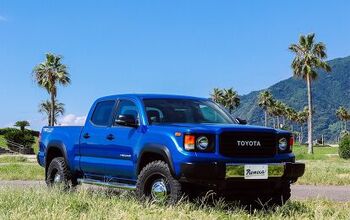Federal Appeals Court Embraces DC Speed Cameras
The US Court of Appeals for the DC Circuit on Tuesday rejected a class action lawsuit filed against the speed camera program in the nation’s capital. Motorists Henry Dixon and Cuong Thanh Phung argued the city violated their constitutional guarantee to equal protection of law by treating drivers pulled over for speeding more harshly than drivers mailed photo tickets for speeding.
The US District Court for the District of Columbia ruled against Nixon and Phung, finding no violation of the Fourteenth Amendment (through the Fifth Amendment) because drivers apprehended for speeding by police officers are not similarly situated to motorists photographed and accused of speeding by a photo radar device. The district judge reasoned that the camera is unable to confirm that the owner was the driver, so the greater punishment should not be imposed. The three-judge appellate panel agreed with the lower court’s conclusion, but for a different reason. The speed camera law can stand under the “rational basis test” used to insulate government actions from constitutional challenge.
“The District’s disputed traffic enforcement policies neither burden a fundamental right nor target a suspect class,” Judge Harry T. Edwards wrote for the appellate court. “Therefore, in attacking the rationality of the District’s legislative classification, appellants have the burden to negative every conceivable basis which might support it. Appellants have not met this burden.”
Drivers who exceed the speed limit by 30 MPH — and this could include driving as little as 55 MPH on a wide, six-lane boulevard — are subject to a $300 fine and ninety days in jail if pulled over by the Metropolitan Police Department. If, on the other hand, American Traffic Solutions decides a vehicle is speeding, the company can only issue a civil ticket.
“The District has decided that the best way to deter speeding is through the creation of some variability and uncertainty in the city’s enforcement schemes,” Edwards wrote. “The wisdom of such a determination is not the appropriate subject of equal protection review.”
Washington’s cameras have issued more than $312 million in citations since 1999. The appellate judges found aspects of the program that increase that revenue actually help the city’s legal case.
“Because automated traffic enforcement (ATE) does not require police officers to pursue, detain, or arrest speeding motorists, it is axiomatic that the District’s use of this enforcement system substantially increases the number of speeding motorists who will be detected and face a monetary penalty,” Edwards wrote. “It is true that the owner of a vehicle who receives a citation may request a hearing to demonstrate that he or she was not driving the car when the speeding violation occurred. But the District has good reason to assume that most persons who are cited via the ATE will not contest the fine, either because they are actually guilty of speeding or because objecting is not worth the aggravation.”
A copy of the decision is available in a 45k PDF file at the source link below.
Source:
Dixon v. District of Columbia (US Court of Appeals, DC Circuit, 12/20/2011)
[Courtesy: Thenewspaper.com]
More by The Newspaper
Latest Car Reviews
Read moreLatest Product Reviews
Read moreRecent Comments
- Analoggrotto Does anyone seriously listen to this?
- Thomas Same here....but keep in mind that EVs are already much more efficient than ICE vehicles. They need to catch up in all the other areas you mentioned.
- Analoggrotto It's great to see TTAC kicking up the best for their #1 corporate sponsor. Keep up the good work guys.
- John66ny Title about self driving cars, linked podcast about headlight restoration. Some relationship?
- Jeff JMII--If I did not get my Maverick my next choice was a Santa Cruz. They are different but then they are both compact pickups the only real compact pickups on the market. I am glad to hear that the Santa Cruz will have knobs and buttons on it for 2025 it would be good if they offered a hybrid as well. When I looked at both trucks it was less about brand loyalty and more about price, size, and features. I have owned 2 gm made trucks in the past and liked both but gm does not make a true compact truck and neither does Ram, Toyota, or Nissan. The Maverick was the only Ford product that I wanted. If I wanted a larger truck I would have kept either my 99 S-10 extended cab with a 2.2 I-4 5 speed or my 08 Isuzu I-370 4 x 4 with the 3.7 I-5, tow package, heated leather seats, and other niceties and it road like a luxury vehicle. I believe the demand is there for other manufacturers to make compact pickups. The proposed hybrid Toyota Stout would be a great truck. Subaru has experience making small trucks and they could make a very competitive compact truck and Subaru has a great all wheel drive system. Chevy has a great compact pickup offered in South America called the Montana which gm could make in North America and offered in the US and Canada. Ram has a great little compact truck offered in South America as well. Compact trucks are a great vehicle for those who want an open bed for hauling but what a smaller more affordable efficient practical vehicle.


































Comments
Join the conversation
They make it easy to comply by promising not to tell Allstate or State Farm about this or tack points onto your license. Just contribute to Better Government and we'll call it even. Just tack DC on the list of places not to drive or spend money in.